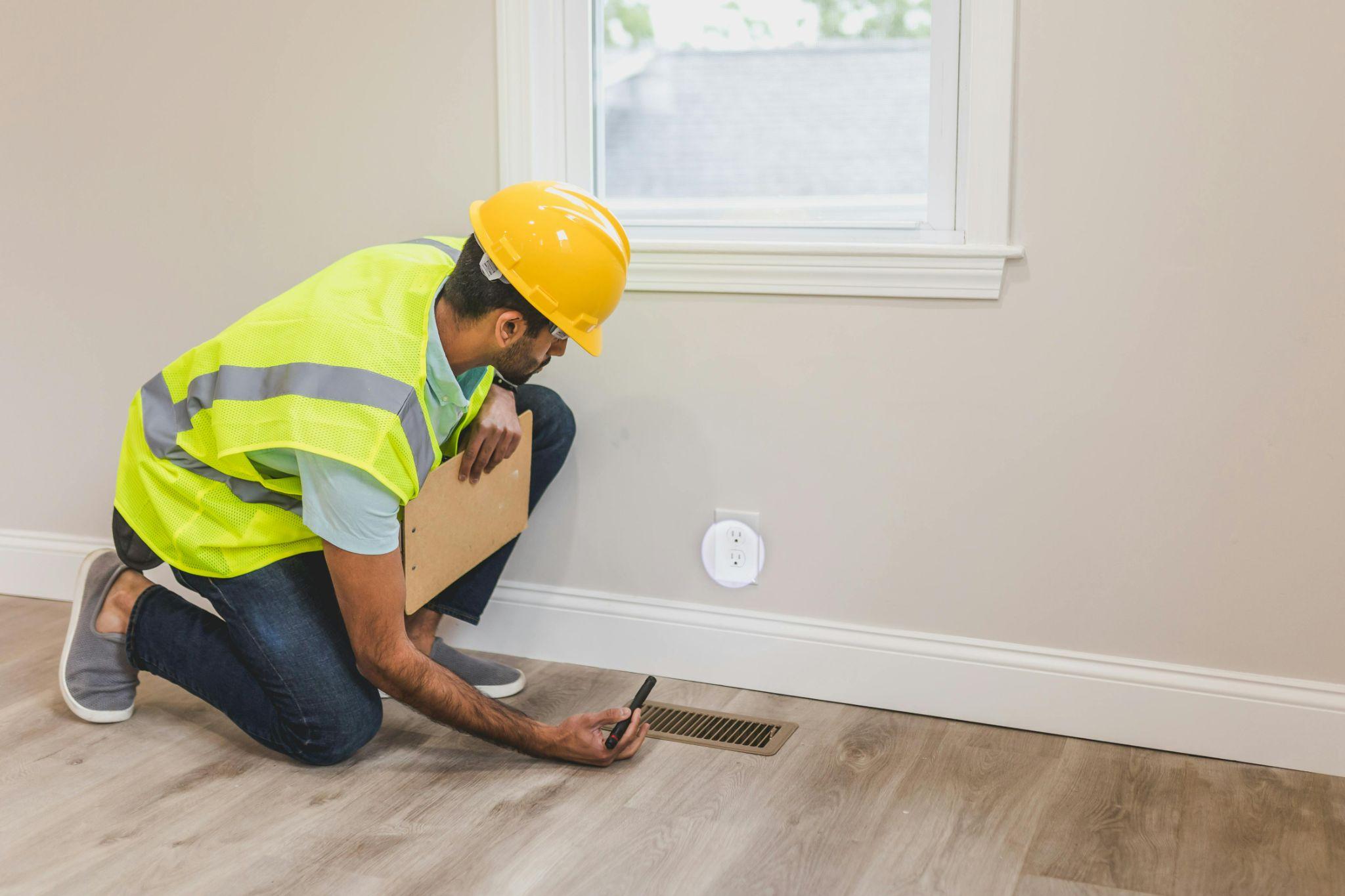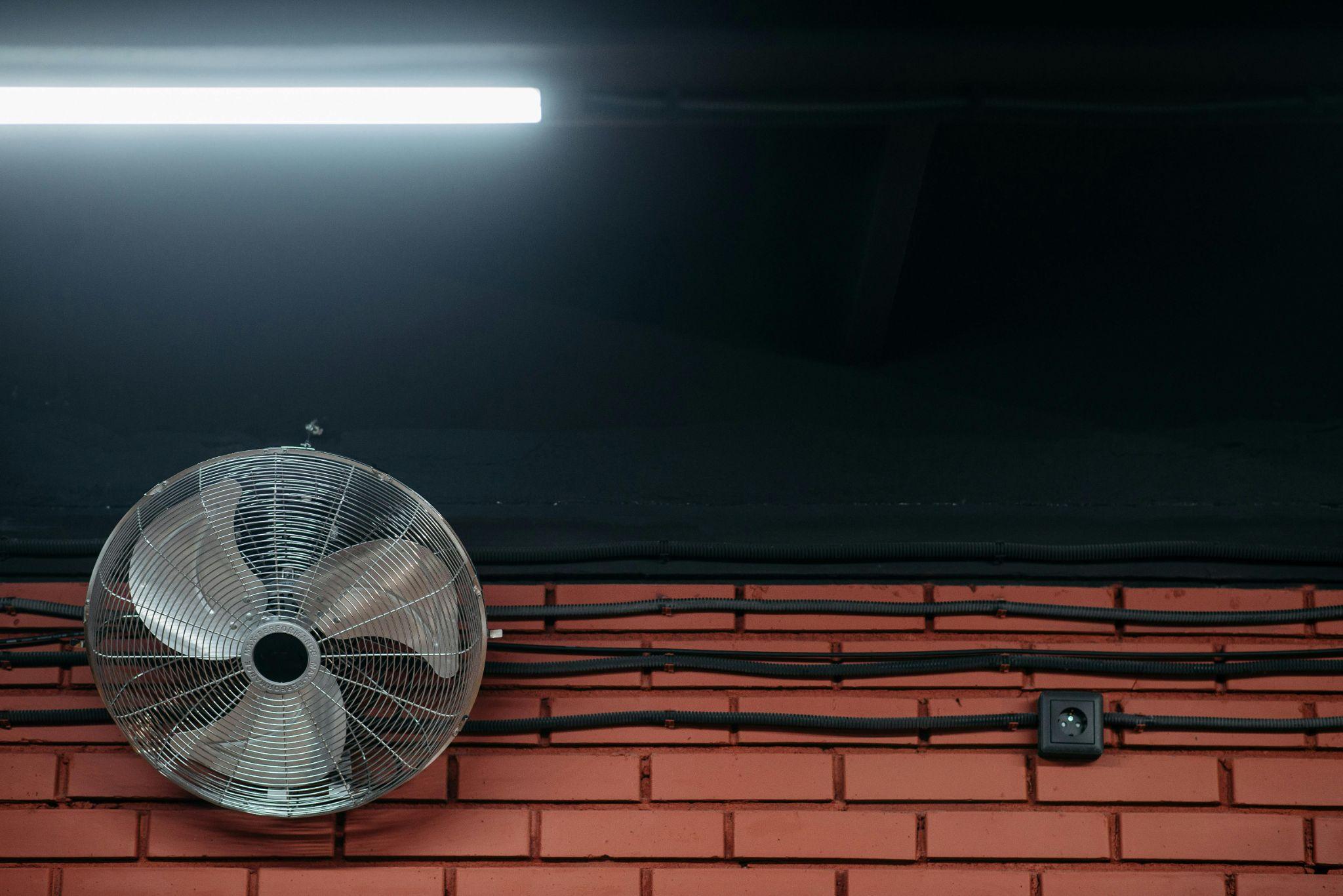Regular HVAC cleaning and maintenance forms the backbone of home comfort, energy efficiency, and system longevity. A well-maintained heating, ventilation, and air conditioning system not only ensures consistent indoor temperatures year-round but also reduces energy consumption by up to 15% while preventing costly emergency repairs. This comprehensive guide provides homeowners with practical, step-by-step maintenance procedures that can extend system life, improve air quality, and keep utility bills manageable. By following these proven techniques, you’ll master the essential tasks that keep your HVAC system running smoothly through every season.
Understanding Your Home HVAC System
Modern residential HVAC systems integrate multiple components working together to regulate indoor climate through coordinated heating, cooling, and air circulation. Understanding these interconnected parts enables homeowners to perform targeted maintenance tasks effectively while recognizing when professional intervention becomes necessary.
Major Components Explained
Each component within your HVAC system serves specific functions that contribute to overall performance and efficiency. Familiarizing yourself with these elements helps identify maintenance priorities and potential problem areas.
| Component | Primary Function | Maintenance Requirements |
|---|---|---|
| Air Handler/Furnace | Circulates conditioned air throughout home | Monthly filter changes, annual cleaning |
| Evaporator Coils | Absorbs heat from indoor air during cooling | Seasonal cleaning, leak inspections |
| Condenser Coils | Releases heat outdoors during cooling cycle | Regular debris removal, fin straightening |
| Ductwork | Distributes conditioned air to living spaces | Annual inspections, sealing leaks |
| Air Filters | Removes particles and contaminants from air | Monthly inspection, replacement as needed |
| Thermostat | Controls system operation and temperature | Battery replacement, calibration checks |
| Outdoor Unit | Houses condenser and compressor components | Seasonal cleaning, vegetation clearance |
Seasonal Performance Factors
HVAC systems face varying demands throughout the year, requiring different maintenance approaches to maintain peak efficiency. Understanding these seasonal factors helps homeowners anticipate maintenance needs and prevent system strain.
- Spring preparation: Remove winter debris, inspect for damage from ice or snow, test cooling components before hot weather arrives
- Summer stress factors: Increased runtime leads to faster filter clogging, higher dust accumulation, and greater wear on moving parts
- Fall transition period: Clear falling leaves from outdoor units, prepare heating components, inspect ductwork for summer damage
- Winter challenges: Monitor heating efficiency, prevent ice buildup, ensure proper ventilation during extended heating periods
- Humidity fluctuations: Seasonal moisture changes affect condensate drainage, indoor air quality, and system component longevity
Routine DIY Maintenance Tasks for Homeowners

Consistent homeowner-performed maintenance prevents 80% of common HVAC problems while reducing energy consumption and extending equipment life. These straightforward tasks require minimal tools and time investment but deliver significant returns in system reliability and efficiency.
Air Filter Inspection and Cleaning
Air filters represent the first line of defense against airborne contaminants and system damage. Regular inspection every 30-60 days prevents restricted airflow, reduced efficiency, and premature component wear.
Filter Replacement Steps:
- Turn off HVAC system power at thermostat and breaker
- Locate filter compartment in air handler or return air duct
- Remove old filter, noting airflow direction arrows
- Inspect filter condition and surrounding area for debris
- Install new filter matching size specifications exactly
- Ensure proper fit with no gaps around filter edges
- Reset system and monitor airflow improvement
| Filter Type | Lifespan | Efficiency Rating | Pros | Cons |
|---|---|---|---|---|
| Fiberglass | 1 month | Low (MERV 1-4) | Inexpensive, basic protection | Poor filtration, frequent replacement |
| Pleated | 3 months | Medium (MERV 5-12) | Better filtration, longer lasting | Higher cost, can restrict airflow |
| Washable | 5+ years | Variable | Reusable, eco-friendly | Requires regular cleaning, lower efficiency |
Cleaning Coils, Fins, and Outdoor Unit
Clean evaporator and condenser coils maintain optimal heat transfer efficiency, preventing system overwork and reducing energy consumption. Dirty coils can decrease efficiency by 30% while increasing operating costs significantly.
Essential cleaning tools and procedures:
- Soft bristle brush for gentle coil cleaning without fin damage
- Garden hose with spray attachment for debris removal
- Fin comb tool for straightening bent aluminum fins
- Coil cleaner solution for stubborn dirt and organic buildup
- Protective equipment including gloves and safety glasses
- Annual deep cleaning schedule with monthly visual inspections
Clearing Condensate Drains and Lines
Blocked condensate drains cause water damage, mold growth, and system shutdowns during cooling season. Regular cleaning prevents costly repairs and maintains healthy indoor air quality.
Condensate line maintenance checklist:
- Power off system completely at breaker and thermostat
- Locate condensate drain line near indoor air handler unit
- Remove standing water using wet vacuum or absorbent cloths
- Clear visible debris from drain pan and line entrance
- Flush drain line with white vinegar solution to prevent algae
- Test drainage by pouring clean water into drain pan
- Monitor system operation for proper condensate removal
Maintaining Vents, Registers, and Indoor Components
Clean vents and registers ensure proper airflow distribution while preventing dust accumulation that degrades indoor air quality. Regular cleaning maintains system balance and occupant comfort.
- Remove and wash register covers monthly using warm soapy water
- Vacuum ductwork openings to eliminate accumulated debris and pet hair
- Inspect dampers for proper operation and adjust seasonal airflow settings
- Clean return air grilles weekly during high-use seasons
- Dust thermostat and surrounding wall area to prevent sensor interference
- Lubricate blower motor bearings annually per manufacturer specifications
Seasonal and Safety Checks
Pre-season HVAC inspections identify potential problems before they cause system failures or safety hazards. These proactive measures ensure reliable operation during peak demand periods while maintaining safe indoor environments for occupants.
Pre-Cooling Season Checklist
Preparing your system before hot weather prevents mid-summer breakdowns and ensures optimal cooling efficiency throughout the season.
- Remove protective covers from outdoor condensing unit
- Clear vegetation, debris, and obstacles within 2-foot radius
- Inspect refrigerant lines for damage, wear, or leak signs
- Test system startup sequence and monitor initial operation
- Verify thermostat programming matches cooling preferences
- Schedule professional refrigerant level assessment if needed
- Clean outdoor unit fins and coils thoroughly
Pre-Heating Season Checklist
Heating system preparation ensures safe, efficient operation during cold weather while preventing carbon monoxide risks and fuel waste.
- Inspect heat exchanger for cracks, corrosion, or damage signs
- Test ignition system operation and flame characteristics
- Clean burner assembly and surrounding combustion area
- Check gas line connections for leaks using soap solution
- Verify proper venting and exhaust system operation
- Test safety controls including limit switches and sensors
- Confirm adequate fuel supply for heating season demands
Safety and Visual Checks
Recognition of warning signs prevents dangerous situations while identifying maintenance needs before they become expensive repairs.
- Strange noises: Grinding, squealing, or banging sounds indicating worn components or loose parts
- Unusual odors: Burning smells, gas odors, or musty scents suggesting safety hazards or system problems
- Visible leaks: Water stains, refrigerant traces, or fuel odors indicating immediate attention needs
- Rising energy bills: Unexplained consumption increases suggesting efficiency problems or system faults
- Uneven temperatures: Hot or cold spots indicating ductwork problems or system imbalances
- Frequent cycling: Short runtime cycles suggesting oversized equipment or control problems
Advanced Maintenance: Ductwork, Refrigerant, and Professional Services

Complex maintenance tasks require specialized knowledge, tools, or certifications that exceed typical homeowner capabilities. Understanding these limitations helps homeowners make informed decisions about professional service needs while maintaining system safety and regulatory compliance.
Inspecting and Sealing Ductwork
Ductwork integrity directly impacts system efficiency, with leaky ducts wasting 20-30% of conditioned air and allowing contaminants to enter the system. Professional duct sealing improves efficiency while enhancing indoor air quality.
| Inspection Signs | Potential Issues | Sealing Solutions |
|---|---|---|
| Dust accumulation | Leaky return ducts | Mastic sealant application |
| Uneven airflow | Disconnected segments | Professional duct repair |
| Whistling sounds | Gap or hole formation | Metallic foil tape sealing |
| High energy bills | Multiple leak points | Comprehensive duct testing |
Refrigerant Checks and Legal Requirements
Refrigerant handling requires EPA certification due to environmental regulations and safety concerns. Only licensed technicians can legally purchase, handle, or dispose of refrigerants in residential systems.
Signs requiring professional refrigerant service:
- Ice formation on evaporator coils during cooling operation
- Warm air from supply vents despite thermostat calling for cooling
- Hissing sounds near refrigerant lines indicating active leaks
- Oily residue around line connections suggesting refrigerant loss
- Short cycling or continuous operation without achieving set temperatures
The Environmental Protection Agency mandates that all refrigerant work must be performed by certified technicians to prevent environmental damage and ensure proper handling procedures.
Scheduling Professional HVAC Tune-Ups
Bi-annual professional maintenance maximizes system reliability while maintaining manufacturer warranty requirements. Spring and fall tune-ups address seasonal preparation needs comprehensively.
Professional technician services include:
- Electrical connection testing and tightening procedures
- Airflow measurement and adjustment for optimal distribution
- Deep coil cleaning using specialized equipment and solutions
- Refrigerant pressure testing and leak detection procedures
- Safety control calibration and emergency shutdown testing
- Combustion analysis for gas-fired heating equipment
- Complete system performance evaluation and efficiency testing
Energy Efficiency and Indoor Air Quality Enhancements
Strategic HVAC upgrades reduce operating costs while improving comfort and air quality. Modern efficiency technologies pay for themselves through reduced utility bills and enhanced system performance.
Upgrading Filters and Thermostats
High-efficiency components optimize system operation while providing advanced control capabilities that match modern lifestyle demands.
| Component Type | Standard Option | High-Efficiency Option | Efficiency Gain | Cost Difference |
|---|---|---|---|---|
| Air Filters | MERV 1-4 basic | MERV 13-16 pleated | 15-20% better air quality | 3x initial cost |
| Thermostats | Manual adjustment | Smart programmable | 10-15% energy savings | 5x initial investment |
Indoor Air Quality Boosters
Advanced air treatment technologies address specific indoor environmental concerns while working seamlessly with existing HVAC systems.
- Whole-house humidifiers: Maintain optimal moisture levels preventing dry air discomfort and static electricity
- UV air sanitizers: Eliminate biological contaminants including mold, bacteria, and viruses within ductwork
- Electronic air purifiers: Capture microscopic particles and allergens beyond standard filter capabilities
- Heat recovery ventilators: Provide fresh outdoor air while recovering energy from exhaust air streams
Troubleshooting Common HVAC Issues
Regular maintenance minimizes system problems, but understanding basic troubleshooting saves time and money while preventing minor issues from becoming major repairs.
Filter-Related Performance Drops
Restricted airflow from dirty filters causes multiple system problems including reduced efficiency, increased energy consumption, and potential equipment damage.
- Check filter condition monthly during peak usage seasons
- Replace immediately when surface appears gray or clogged
- Monitor system performance improvement after filter replacement
- Upgrade to higher-efficiency filters if dust accumulation occurs rapidly
Coil or Condensation Problems
Dirty coils reduce heat transfer efficiency while causing system freeze-ups or inadequate cooling performance during hot weather operation.
- Clean outdoor condenser coils using gentle water spray and soft brush
- Clear condensate drain lines using wet vacuum or vinegar flush
- Inspect indoor evaporator coils annually for dust buildup or biological growth
- Schedule professional coil cleaning if performance problems persist
Thermostat or Control Errors
Thermostat malfunctions cause temperature control problems, energy waste, and occupant discomfort throughout heating and cooling seasons.
- Recalibrate thermostat using manufacturer instructions and accurate thermometer
- Replace batteries in programmable units according to seasonal schedule
- Reset system controls by turning off power for 5 minutes
- Verify programming matches actual occupancy and comfort preferences
- Clean dust from thermostat components affecting sensor accuracy
- Consider upgrading to smart thermostat for enhanced control capabilities
Conclusion
Comprehensive HVAC maintenance combines regular cleaning, seasonal preparation, strategic upgrades, and professional services to maximize system performance, efficiency, and longevity. Homeowners who commit to consistent maintenance routines enjoy lower energy bills, improved indoor comfort, and fewer emergency repairs throughout their system’s operational life. The investment in proactive maintenance pays dividends through enhanced safety, better air quality, and extended equipment life that can exceed manufacturer expectations. By understanding when to perform DIY tasks and when to engage qualified professionals, homeowners maintain optimal HVAC performance while protecting their investment in home comfort systems.

